How to Make Goat Milk Soap For Beautiful + Glowing Skin
You’ll love this natural, farm-inspired bar. Anyone can make goat milk soap with powdered milk and still enjoy all the nourishing and exfoliating benefits. I’ll walk you through this cold process soap step-by-step so you can master it even as a beginner.
I did not add any color to this batch and it turns out a natural creamy tan. But you can add any fragrance or colorant you’d like.
Nourishing Goat Milk Soap Recipe
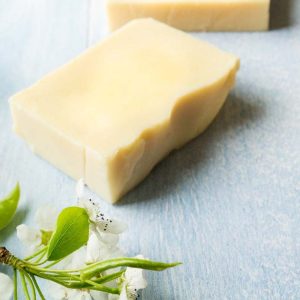
Equipment
Ingredients
- 3 ounces almond oil
- 2 ounces castor oil
- 10 ounces coconut oil
- 10 ounces olive oil
- 6 ounces palm oil
- 3 ounces shea butter
- 1 ounce beeswax
- 4.91 ounces lye sodium hydroxide
- 12 ounces goat milk (or combine 1 ounce powdered goat milk and 11 ounces water)
Save This Recipe
You'll join my email list which you will love. And if you don't, unsubscribe in one click. ❤️
Instructions
- Freeze milk. Prepare the goat milk by freezing for a few hours until it reaches a slushy consistency.
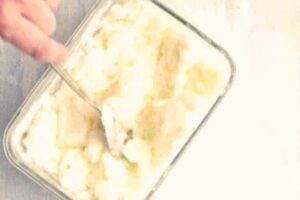
- Add lye. Add the lye to the partially frozen milk and stir until completely blended. It will melt, heat up, and may change color. Set aside in a safe place.

- Measure and melt oils. Measure the oils, butters, and beeswax and melt over low heat until completely melted and heated to 140 degrees. Set aside.

- Let both components cool. Let your lye solution and melted oils (still in their separate containers) cool to about 110 degrees. Meanwhile, prepare you mold, tools, and any fragrances or colors you're using.

- Blend to trace. When the milk and oils have cooled to about 110 degrees, pour the milk into the melted oils and blend using a stick blender. Mix until "trace" is achieved, or the soap thickens slightly and a trail of soap rests on top of the batter rather than immediately sinking in. Add desired fragrance or color, stirring in by hand.

- Pour into mold. Pour into soap mold, gently smoothing out top. Place in fridge or freezer to avoid cracking. Un-mold after 24 hours, cut into bars, and allow to cure for 2 weeks before using.

- Unmold. Release the soap from the mold, and cut into bars. Let cure in a place with good air circulation for 2 weeks beforeusing.

Video
Notes
Did You Make This?
I would love it if you would leave a review!Soap Making Tips
- Lye Safety: Always add lye to liquid, not the other way around, to avoid a volatile reaction. This is known as “snow floats on the lake.”
- Ingredient Temperatures: If using frozen goat milk, let it reach a slushy consistency rather than completely thawed to help control the reaction temperature with the lye.
- Note-taking: Keep detailed notes on your process, including temperatures, trace consistency, and cure times. This will be a valuable reference for troubleshooting and replicating successful batches.
- Temperature Control: Keep your lye mixture and milk mixture at room temperature to ensure smooth integration and prevent a false trace.
- Mold Options: Ice cube trays can be used as molds for smaller bars of soap, or to test different recipes without committing to a large batch.
- Mixing Tools: Use an immersion blender to mix your soap batter, but operate it in short bursts to avoid introducing too many air bubbles.
Understanding Saponification in Soap Making
Saponification is the chemical reaction that occurs when fats or oils mix with lye to create soap. This process can be fascinating and crucial for any soap maker to understand:
- Fats and Lye: Unsaturated fats in oils like olive oil, avocado oil, and cocoa butter react with lye to produce a creamy lather. The type of oil can affect the hardness of the soap, its cleansing properties, and the lather it produces.
- Controlled Reaction: Managing the temperature and proportions of your ingredients using tools like a lye calculator is critical. The milk should be kept cool to prevent scorching due to the heat produced in the reaction.
- Gel Phase: This is a part of the saponification process where the soap starts to heat up after being poured into the mold and goes through a gel-like phase. This phase can affect the color and texture of the finished soap.

The Benefits of Goat Milk Soap
Goat milk soap is famous because of the lactic acid, which naturally exfoliates.
- Moisturizing: The cream in goat milk helps boost the moisturizing quality of the soap, making it exceptionally good for dry and sensitive skin.
- Gentle Cleansing: Unlike commercial detergent-based soaps, goat milk soap gently cleanses the skin without stripping it of its natural oils.
- Natural Exfoliant: The lactic acid in goat milk naturally exfoliates the skin, removing dead skin cells and promoting smoother, younger-looking skin.
- Supports Skin Barrier: The fatty acids in goat milk help support a healthy skin barrier, keeping the skin resilient and less prone to damage.
- Reduces Inflammation: The anti-inflammatory properties of goat milk soap can help calm and soothe troubled skin, making it beneficial for those with conditions such as eczema or psoriasis.
Where to Buy Soap Supplies
Soapmaking requires a few specific items. Some you might have on hand but some you won’t. Here are my recommended places to purchase soap supplies.
- I recommend Nurture Soap for fragrance and colors. They are affordable and you can get fragrances and colors in small quantities if you want.
- I buy my lye online from Walmart.
- Powdered goat milk is most affordable at Amazon but you can also find it at some grocery stores.
- Bulk oils I purchase at Bulk Apothecary.
- a kitchen scale that allows you to zero out your measurements (I use and recommend this one.)
- a soap mold (this recipe fits perfectly into a 10-inch silicone loaf mold like this)
9 Bags Dried Flowers,100% Natural Dried Flowers Herbs Kit for Soap Making, DIY Candle Making,Bath – Include Rose Petals,Lavender,Don’t Forget Me,Lilium,Jasmine,Rosebudsand More60 Pcs Soap Accessories Set Including 20 Pcs Wood Soap Holder Soap Dishes for Bar Soap Tray, 20 Pcs Soap Saver Bag Exfoliating Soap Pouch, 20 Pcs Self Draining Soap Saver Pads for Bathroom Men BathMeyenberg Whole Powdered Goat Milk, Vitamin D, 12 OunceDD-life Flexible Rectangular Soap Silicone Loaf Mold Wood Box for 42oz Soap Making Supplies ¡
🔍 FAQs
Like anything in the soap-making world, there are a lot of opinions about this! Many people argue that all the vitamins and minerals in milk benefit your skin, and many say that none of those minerals can be found in a finished bar. Either way, goat’s milk does contain a good amount of lactic acid, which is a natural exfoliant and can help give you glowing skin, improve acne, and make you look younger.
Just any cold process soap, we still need lye and oils. You can actually make any cold process soap into goat soap by replacing some or all of the water in the recipe with milk.
Well, technically, no. You can’t make soap without lye. But you can buy a pre-made goat milk soap base, customize it with fragrance and color, and pour it into the mold of your choice. No need to handle lye.
No problem! Just get the powdered kind, mix it with water, and you’re off to the races. You can also use powdered goat’s milk to make goat milk lotion bars.
Absolutely! Essential oils can provide natural scents and additional skin benefits. Just make sure to use them safely and check for any skin sensitivity.
The cold process method involves mixing the lye with oils without external heating, leading to a gradual saponification over several weeks. The hot process method speeds up the saponification by cooking the soap, which allows the soap to be used sooner.
Trace in soap making is when the soap batter thickens to the consistency where a drizzle of soap stays on the surface before sinking back in. It can be a light trace, which is thin and barely noticeable, or a thicker trace more suitable for adding textures.
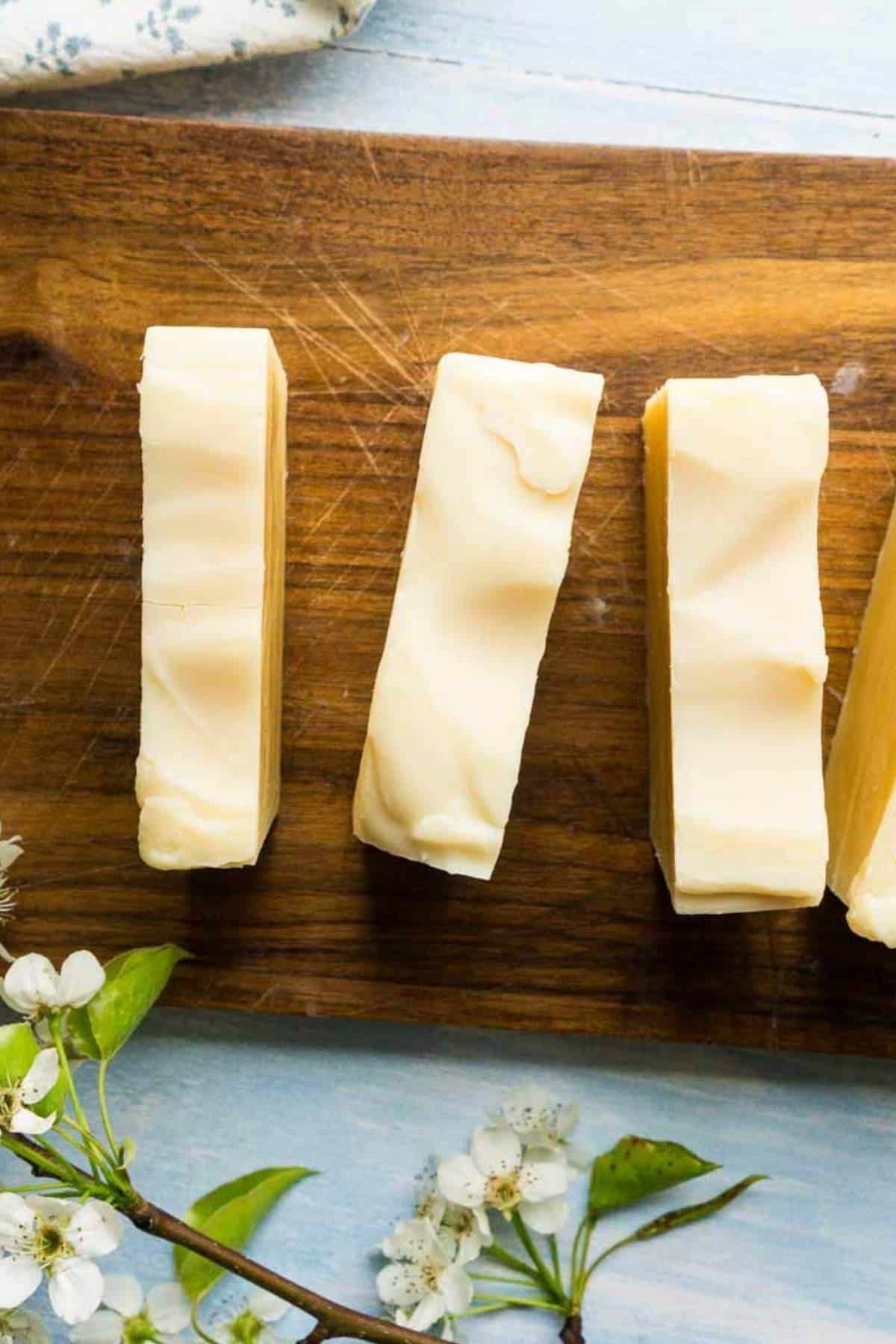
Love,


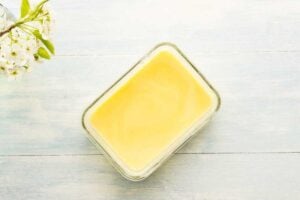
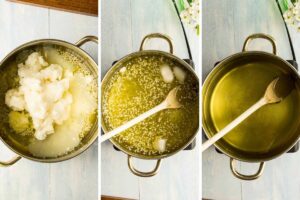
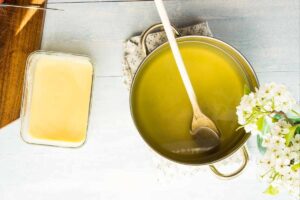
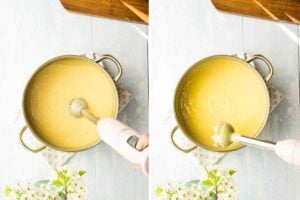
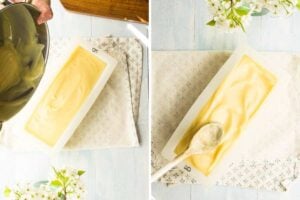













Hi! I have some questions about the palm oil. Is the palm oil you used in liquid or solid form? And is there anything you can use as a substitute if palm oil is not available?
awesome
how much I can use of goat milk powder and water? this mix can I use to mix with the lye?
yes, you mix the powder with the water the amount are in the recipe
Thanks for the recipe! We just took our soaps out of the molds. During the two week curing period, should they be exposed to air or not? We put them into individual zip lock bags.
yes expose to air! they will continue to cure and dry. i like to just put it an old shoe box with llayers of newspaper .